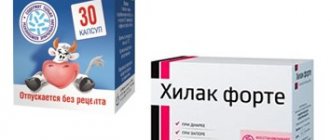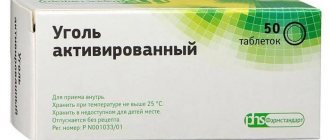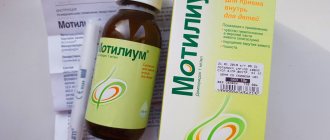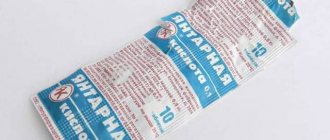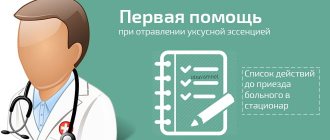Ascorbic acid, whose benefits were described by scientists more than a hundred years ago, remains one of the most popular and well-known vitamins. Many consider it a panacea for all diseases. Indeed, the list of benefits of ascorbic acid is surprising and attracts attention. In order for the use of the vitamin to be beneficial, it is important to know when and how to drink ascorbic acid.
Photo: Kolodyaznaya V.S. Food chemistry: Textbook. - St. Petersburg: SPbGAKhPT, 1999. - 140 p.: UGC
What is ascorbic acid
Ascorbic acid is a six-carbon compound bound to glucose. It is found in citrus fruits and many vegetables. It is an important nutrient in the human diet, beneficial for the maintenance of connective tissue and bones, and is considered an antioxidant. The effect of ascorbic acid on the body is expressed in replenishing its deficiency and improving system functions.
Overdose symptoms
An overdose of ascorbic acid manifests itself as poisoning with other drugs and is expressed by the following symptoms:
- gastrointestinal reaction: nausea, heartburn, vomiting, diarrhea;
- increased fatigue, persistent weakness, drowsiness;
- weakened immunity due to a drop in the level of leukocytes in the blood;
- from the nervous system - severe headaches and a feeling of malaise.
If you suspect ascorbic acid poisoning, contact your doctor.
Learn what to do in such situations:
- Vitamin C is absorbed quickly. Attempts to cleanse the body of its excess by gastric lavage or taking sorbents will lead nowhere.
- If the slightest symptoms occur, hospitalization is required. It is unknown what reaction the body will have in a few more hours.
- An overdose of ascorbic acid is treated based on symptoms. For stomach problems, medications that protect the stomach lining are first prescribed.
- There is no antidote in such cases, since ascorbic acid itself is an antidote for poisoning. From time to time, doctors prescribe vitamins A and E to reduce the negative effects of ascorbic acid on the body.
To avoid an overdose, remember that the maximum daily dose of the substance is 120,000 mg. It also wouldn’t hurt to read the instructions included with the package.
The benefits of ascorbic acid
The food supplement has antiatherogenic, anticarcinogenic, antihypertensive, antiviral, antihistamine, immunomodulatory, and ophthalmoprotective properties.
The benefits of ascorbic acid for the body are expressed in the following:
- Treats wounds in complex therapy.
- Prevents infections.
- Keeps skin healthy.
- Maintains the strength of bones and connective tissue.
- Supports protein metabolism.
- Used in the prevention and treatment of cancer.
- Helps in collagen formation and improves iron absorption.
- In addition to its biosynthetic and antioxidant properties, it plays a crucial role in strengthening the immune system.
The benefits of ascorbic acid for women are that it:
- promotes iron absorption and prevents anemia;
- participates in the prevention of aging;
- helps to bear a child.
The benefits of ascorbic acid for men are invaluable. It has properties:
- eliminating erectile dysfunction;
- increasing endurance and resistance to stress, which is important for work and sports;
- increase in physical activity.
For immunity
A strong immune system is the first line of defense against colds, flu and many other viral and bacterial infections.
Vitamin C benefits the body by increasing the production of disease-fighting white blood cells and increasing interferon levels, preventing viruses from entering the blood.
It has high antiviral and antibacterial activity and is useful for the development of immunity.
For the brain
The substance is useful for the synthesis of L-carnitine and neurotransmitters known as catecholamines (dopamine and adrenaline). They affect mood and resistance to negative factors.
The concentration of the beneficial substance in the blood serum is inversely related to the risk of developing dementia. Regarding Alzheimer's disease, oxidative stress is believed to play a major role in the pathogenesis of the disease. Vitamin C helps reduce stress and improves the condition of older people.
For colds and flu
Some studies suggest that ascorbic acid may be a useful remedy for colds. In general, people taking supplements may have slightly shorter periods of illness or milder symptoms. But official clinical tests do not indicate a connection with relief from influenza, rhinitis and other seasonal ailments.
During menstruation
Ascorbic acid is useful for the normal course of menstruation.
Taking it in a higher dosage causes the property of inhibiting the entry of prostaglandin into the body, which leads to the onset of menstruation.
The benefits are manifested in the following actions:
- regulates hormone balance;
- increases the absorption of tocopherol, which has fertility supporting properties;
- reduces the intensity of premenstrual syndrome, reduces harm from mood swings, irritability, drowsiness;
- facilitates the course of cyclic fluctuations: pain and tension are reduced;
- improves skin condition, removes acne.
For athletes and bodybuilders
The benefit of ascorbic acid for athletes lies in its properties to enhance the body's endurance and increase tolerance to increased physical activity.
The beneficial effect for bodybuilders is expressed in a positive effect on testosterone. In addition, cortisol levels decrease, which prevents muscle mass from growing.
For daily exercise, athletes are recommended to take up to 3000 mg per day in three divided doses. The benefits of ascorbic acid in this dosage are manifested in rapid recovery from injuries and the prevention of muscle pain.
When using supplements, you need to be aware of the possible harm to the digestive system.
For pregnant women
The benefits of vitamin C for pregnant women are similar to those for other people. In addition, it helps to better absorb iron.
However, in high doses the supplement may have harmful effects on the fetus. The need for admission should be determined by a doctor.
Consumption is considered safe during breastfeeding, but the amount should be checked with your pediatrician.
For children
Deficiency in a child can lead to bone abnormalities, hemorrhagic symptoms and anemia.
It typically occurs in children with severe dietary restrictions, most often caused by neuropsychiatric or gastrointestinal disorders. The child does not want or cannot eat vegetables and fruits.
Vitamin C is beneficial for its bone and tissue repair properties. This helps baby's gums stay healthy and strengthens blood vessels, minimizing bruising from falls. In addition, it helps heal cuts and wounds, strengthens the immune system and protects against infections. The excess is quickly washed out by the kidneys and does no harm.
Ascorbic acid with glucose is particularly beneficial for children, as it increases the absorption of vitamin C. The combination of substances helps withstand high stress in school and sports.
Deficiency leads to chronic fatigue and poor resistance to disease.
Taken in combination with glucose is allowed from 6 years of age at a dose of no more than 75 mg/day.
Is ascorbic acid good for weight loss?
Taking 500 mg of the supplement in combination with an exercise routine and calorie-restricted diet is beneficial in reducing heart rate and perceived exertion levels. The drug has no benefit for weight loss. It simply helps improve your overall condition.
Other Health Benefits of Vitamin C
The influence of this nutrient on the body is diverse, including emotional background, body weight, interaction with other nutrients, etc.
Benefits of Vitamin C: Increases Iron Absorption
Iron plays a key role in the formation of hemoglobin and also supports muscle and brain function. Adequate absorption by the body is essential to prevent anemia and fatigue.
According to one study, 280 mg of vitamin C taken into the body during breakfast will double the amount of iron. These are the indirect benefits of ascorbic acid.
Benefits of ascorbic acid: improves calcium absorption
Iron isn't the only nutrient that can be absorbed more efficiently with vitamin C. Ascorbic acid may enhance calcium absorption in the intestine, according to a 1976 study.
Calcium is included in many buffered vitamin C supplements to help maintain pH balance and improve digestion.
The benefits of ascorbic acid for lead poisoning
Low levels of vitamin C in the bloodstream are often associated with high levels of lead. Regular addition of ascorbic acid to the diet has been found to reduce blood lead levels in smokers.
A 1999 University of California study shows that vitamin C can reduce lead poisoning. Foods rich in ascorbic acid are safe and help prevent poisoning from the mentioned mineral.
However, according to the results of a number of scientific studies (Krishna Institute of Medical Sciences Deemed University, India. 2016), taking vitamin C has no effect on such poisoning.
Ascorbic acid improves mood
Many studies have shown that vitamin C can reduce the severity of depressive disorders in both children and adults, and improve mood in healthy people. Long-term nutrient deficiencies are associated with nervousness and emotional instability. Ascorbic acid increases the release of oxytocin (the hormone of love, affection, trust).
Adequate levels of vitamin C are essential for converting the neurotransmitter dopamine into norepinephrine, which is associated with mood disorders as it plays a key role in emotional regulation. This explains why patients with vitamin deficiency had significantly increased symptoms of depression.
Results of a number of projects:
- Vitamin C reduced anxiety in middle school students.
- Short-term supplementation with vitamin C was safe and beneficial in reducing anxiety in patients with diabetes.
Ascorbic acid also increases the effectiveness of antidepressants, according to the results of one research project. Patients treated with fluoxetine and vitamin C for six months showed a significant reduction in depressive symptoms compared with the group that took fluoxetine plus placebo.
In another study, hospitalized patients took either vitamin C (500 mg twice daily) or vitamin D, and researchers measured the effect on mood. After the use of calciferol, no significant improvements in mood were noted, but therapy with ascorbic acid showed a 34% reduction in mood disturbances. The project also found that vitamin C supplementation had little effect on the psychological performance, personality or current mental state of young men (17-29 years old), unless it compensated for an existing deficiency.
In another randomized clinical trial, taking ascorbic acid (3 g per day) led to improved mood and libido in participants, which stimulated greater sexual activity. It is also worth noting that vitamin C improves sperm motility and structure in men.
Benefits of Vitamin C: Boosts Energy
Taking ascorbic acid has been found to relieve fatigue. The dietary supplement facilitated the training of school football players by approximately 10% and reduced fatigue by 55%.
A 2014 University of Arizona study found that vitamin C significantly reduced work-related fatigue in adults.
According to the results of another scientific project, taking dietary supplements with ascorbic acid increased the level of physical activity in men with minimal levels of the nutrient in the body.
Intravenous administration of high doses of vitamin C has been shown to reduce fatigue in office workers.
The benefits of ascorbic acid for recovery after exercise
Ascorbic acid reduces the amount of free radicals produced during exercise, preventing exercise-induced muscle damage, immune dysfunction and fatigue.
Numerous studies have shown that taking a vitamin C supplement (1 g to 3 g) before exercise can reduce muscle soreness, which will reduce rest time and allow you to recover faster and return to training earlier.
How to understand that your body lacks vitamin C
Deficiency can cause symptoms such as:
- Anemia.
- Bleeding gums/nosebleeds.
- Decreased ability to fight infection and heal wounds.
- Dry, split ends.
- Rough, dry, scaly skin.
- Frequent bruising.
- Inflammation of the gums.
- Weakened tooth enamel.
- Weight gain.
- Swollen and painful joints.
If such manifestations are detected, it is recommended to take a blood test.
What happens with vitamin C deficiency?
Are you familiar with one or more of these symptoms - bleeding gums, tooth loss, bruising easily, poor wound healing, lethargy, hair loss, dry skin, irritability, general achiness and tendency to catch colds, joint pain, discomfort, depression? It is worth considering taking additional vitamin C.
The need for ascorbic acid increases with stress, high mental stress, smoking and drinking alcohol, and in old age.
Who should take ascorbic acid?
The benefits and harms of ascorbic acid depend on the specific disease. But, of course, it should be taken in conditions of immunodeficiency, after operations, injuries, physical and mental stress.
It facilitates the absorption of iron, keeping it in a reduced form, which is useful for anemia.
The mechanisms of action of ascorbic acid in the prevention and treatment of cancer include strengthening the immune system, stimulating collagen formation, and preventing metastasis.
The property of accelerating wound healing after surgery and faster healing of fractures was noted.
Ascorbic acid - benefits and harm for the child’s body
Katsuzo Nishi argued that one of the main causes of tumors is a lack of vitamin C. Without this substance, the processes of regeneration of organs and tissues would be impossible. It was once considered the only cure for scurvy.
But is the benefit of ascorbic acid so unique for modern people who consume vegetables and fruits every day? Let's try to figure this out.
Natural sources
The daily requirement for vitamin C is approximately 100 mg per day.
Champions in its content are citrus fruits (orange, lemon, grapefruit), green vegetables (peppers, broccoli, cabbage), berries (black currants, strawberries, raspberries, blueberries, cranberries), melon, watermelon, kiwi, tomatoes and potatoes .
It quickly collapses upon contact with air, metal utensils, high-temperature processing, drying and pickling of fruits. An exception is sauerkraut, in which, when the integrity of the leaves is damaged, vitamin C is additionally formed. Freezing usually does not cause its loss if the products are not stored for long.
At risk
Severe vitamin C deficiency can occur:
- Infants whose mothers took it in large quantities during pregnancy
- Smokers
- People suffering from arthritis and arthrosis
- Patients who have undergone surgery
- People taking non-steroidal anti-inflammatory drugs
Ascorbic acid is prescribed during pregnancy to women at high risk of preeclampsia, which is characterized by high blood pressure and the presence of protein in the urine.
The following diseases increase the need for vitamin C: AIDS, alcoholism, cancer, fever, intestinal diseases, overactive thyroid gland, stomach ulcers, stress, tuberculosis, etc.
Signs of vitamin deficiency
Vitamin deficiency causes considerable harm to our health and appearance.
Vitamin C is essential for the synthesis of collagen, which is used by the body to repair and rebuild skin, bones, teeth and cartilage.
Signs of its deficiency:
- dry hair and split ends
- inflammation and bleeding gums
- rough, flaky dry skin
- nosebleeds
- deterioration in the ability to remember and perceive information
- muscle weakness
- joint pain
- fatigue
- bleeding gums
- weakened immune system
Ascorbic acid is vital for children in the winter-spring period for vigorous tone, good memory and a healthy nervous system.
polzovred.ru>
How to take ascorbic acid
There are doctor-approved daily intake norms, which are shown in the table:
The specifics depend on the form of release, health status, and potential harm.
Instructions for using ascorbic acid in tablets
The benefits of ascorbic acid in tablets are similar to those taken in other forms.
It is usually recommended to take 1 - 2 tablets per day for prevention and 3 tablets in the complex treatment of diseases.
Taking ascorbic acid in powder form
Powdered forms are the most economical and can be easily mixed with liquids. They have different tastes and are good for everyone. One gram of powder is diluted in 1 liter of water - this is the daily dose for an adult. For children it is reduced by half.
Directions for use and dosage
For the solution, intravenous administration is practiced, for tablets - oral administration (sublingual resorption). Dosages are determined by the patient's age, glucose sensitivity, and reason for taking the drug. Due to the fact that the combination of ascorbic acid and glucose actively promotes the synthesis of corticosteroids, doctors advise adhering to the official instructions, especially during pediatric therapy.
Pills
Taking this form - orally, for prevention or treatment, the duration of the course is determined by the doctor, the dosage can also be adjusted. The time of intake does not depend on food. According to the official instructions, the application is as follows:
- For prevention, children are given 50 mg once a day, for treatment (and to improve the absorption of iron supplements) - 100 mg up to 3 times a day.
- Adults are given 100 mg per day for prevention and the same amount, but up to 5 times a day, if it is necessary to enhance iron absorption or for treatment.
Glucose with ascorbic acid intravenously
This form of the drug is used through droppers in medical institutions. The powder is diluted with water (up to 2 ml per ampoule) and administered slowly intravenously or intramuscularly. The dosages are:
- For children, up to 2 ml of a classic (5%) solution once a day, or 4 ml of a 2.5% solution.
- Adults are prescribed glucose and ascorbic acid, 3 ml of a standard solution once or 6 ml of a weaker solution (2.5%).
The use of ascorbic acid in cosmetology
The mechanism of action of ascorbic acid is expressed in the property of controlling the synthesis of melanin and collagen. The body does not accumulate it; it needs to be supplied from the outside, including for external use.
For facial skin
Ascorbic acid for the face in ampoules is useful for solving the following problems:
- tired dull skin color;
- spots, redness and peeling;
- inflammatory processes;
- rosacea;
- expression wrinkles;
- clogged pores and oiliness.
There are no special contraindications, except allergies. A skin test must be done before use to avoid any harm.
Ascorbic acid is useful for wrinkles; to reduce them, the following recipe for a refreshing mixture is used: 1 ampoule of vitamins C and E is diluted in 2 ml of water. The solution is distributed over the face and gently massaged along the massage lines. Must be repeated once a week.
Ascorbic acid is used for age spots. To prepare a whitening mask you should take:
- 0.5 tbsp. l. cottage cheese;
- 2 tsp. crushed black tea;
- 1 ampoule of acid;
- 1 tsp. sea buckthorn oils.
The components are whipped into a homogeneous mass. The applied mask lasts 20 minutes and is washed off.
After regular use, the skin will become cleaner and age spots will gradually disappear.
For beauty and health of hair
Ascorbic acid is very useful for improving hair properties. To strengthen them, it is recommended to make the following mask:
- Mix 1 yolk with 1 ampoule of ascorbic acid and 100 ml of glycerin;
- add water to form the consistency of thick sour cream;
- distribute over the root zone, gently rubbing into the skin;
- wear a special cap or wrap your head in a towel for 30 minutes;
- wash off the composition.
The benefits of vitamin C for hair include eliminating dryness, seborrheic manifestations and activating growth.
How does vitamin C work?
- For almost a hundred years since the discovery of ascorbic acid, scientists have comprehensively studied its properties. It turned out that vitamin C is one of the most powerful antioxidants that prolongs youth.
- It plays an important role in the regulation of redox processes in the body, participates in the synthesis of collagen and procollagen, the metabolism of folic acid and iron, as well as in the synthesis of steroid hormones and catecholamines.
- Ascorbic acid also regulates blood clotting, normalizes capillary permeability and has a positive effect on such an important parameter as the elasticity and strength of vessel walls.
That is why it is so important to take it regularly for all people who have problems with veins (varicose veins, hardening of blood vessels, fragility of capillaries).
- Vitamin C is necessary for hematopoiesis, has anti-inflammatory and antiallergic effects, participates in the formation and maintenance of the normal state of the immune system, and increases resistance to infections.
That is why, during the season of flu epidemics and acute respiratory viral diseases, almost all doctors recommend increasing the daily dose of ascorbic acid, including in effervescent, powder, and tablet form.
- Increased doses of vitamin C are also necessary for those who have undergone surgery or severe trauma with a violation of the integrity of the skin - ascorbic acid enhances reparative (restorative) processes in the body.
Wounds heal faster, sutures heal better, hematomas resolve faster if additional intake of the wonderful ascorbic acid is included in the treatment regimen!
Did you know that... ...the human body cannot synthesize vitamin C on its own? Therefore, we need to constantly receive it from external sources. But since ascorbic acid is not friendly to high temperatures, heat treatment of products containing vitamin C destroys it.
Interaction of ascorbic acid with other drugs
When taken simultaneously with certain medications, the following occurs:
- the concentration in the blood of penicillin and tetracycline antibiotics and the hormone estrogen increases - which requires a reduction in their dose;
- aspirin and contraceptive drugs tend to reduce the absorption of ascorbic acid;
- iron absorption improves;
- simultaneous use with deferoxamine can lead to heart failure;
- increases the toxicity of ethanol and drugs for the relief of withdrawal symptoms;
- taking corticosteroids and salicylates requires reducing their dosage.
Combining solutions in one syringe will be harmful. The ampoule form should be used without mixing.
Daily norm
For normal growth, development and functioning of the body, the following amount of compound is required (per day):
- infants under 1 year – 30-35 mg;
- children from 1 to 3 years – 40 mg;
- children from 4 to 10 years – 45 mg;
- adolescents from 11 to 14 years old – 50 mg;
- men from 15 to 25 years old – 60 mg;
- men from 25 to 50 years old – 75 mg;
- men over 50 years old – 90 mg;
- women from 15 to 50 years old – 60 mg;
- women over 50 years old – 75 mg;
- pregnant and lactating women – 85-95 mg.
What are the benefits of ascorbic acid with glucose?
The benefits of ascorbic acid and glucose are expressed in strengthening each other. The monosaccharide quickly replenishes energy costs, and vitamin C suppresses free radicals. These properties are indispensable when recovering from illness, in sports, and during mental stress. The combination is most effective when taken by children and athletes.
The benefits and harms of ascorbic acid with glucose should be assessed from the standpoint of effectiveness for a specific disease. For example, if you have diabetes, drinking the complex is not recommended due to the risk of increasing blood sugar. Weak tooth enamel prevents chewing of tablets.
Instructions for the use of vitamin C with glucose - indications for children, adults and pregnancy
Deficiency can cause symptoms such as:
- Anemia.
- Bleeding gums/nosebleeds.
- Decreased ability to fight infection and heal wounds.
- Dry, split ends.
- Rough, dry, scaly skin.
- Frequent bruising.
- Inflammation of the gums.
- Weakened tooth enamel.
- Weight gain.
- Swollen and painful joints.
If such manifestations are detected, it is recommended to take a blood test.
Stimulating the synthesis of corticosteroid hormones, improving the absorption of iron (which helps get rid of anemia), and generally strengthening the immune system - this is why ascorbic acid is mainly taken, which few people perceive as a full-fledged medicine.
However, vitamin C, especially when combined with glucose, can have a serious effect on the body due to its rapid penetration into blood cells and tissues in the form of dehydroascorbic acid.
The benefits of this drug can be appreciated even with frequent headaches caused by blood thickening.
Regarding the pharmacodynamics of ascorbic acid:
- Metabolism occurs in the kidneys, most of which is excreted as oxalate.
- The rate of excretion by the kidneys depends on the dose - high doses come out faster.
The main components of the drug are already indicated in the name - these are vitamin C and glucose, their concentration is the same, if we consider the most common form of release: hard tablets (chewable tablets are less common, the dose of active components is doubled).
They are white, flat, with a central notch and without a shell - from the photo you can see that they are no different from classic ascorbic acid. The taste is sour.
Main components (dosage per 1 tablet) Auxiliary components
| Ascorbic acid (100 mg) | Potato starch |
| Glucose (877 mg) | Talc |
| Stearic acid |
In addition to eliminating the deficiency of specific substances, vitamin C is a participant in carbohydrate metabolism, is necessary for normal blood clotting, and plays an important role in the synthesis of hormones (mainly steroids) and collagen. With long-term use of ascorbic acid, a person does not need to take additional folic acid; the need for pantothenic acid and retinol disappears. Additionally she:
- Has an antiplatelet effect.
- Stimulates the synthesis of prothrombin.
- Blocks the release of histamine.
Ascorbic acid with glucose is prescribed to children primarily for general strengthening of the body.
In adults, there are more reasons to take it: firstly, ethanol and nicotine deplete ascorbic acid reserves (ethanol clearance increases), so if they are abused, periodic use of this drug is mandatory. Secondly, ascorbic acid with glucose is prescribed to adults as a reducing agent in the following cases:
- fractures;
- bleeding;
- intoxications;
- poor absorption of iron;
- infectious diseases;
- poor skin regeneration;
- overdose of anticoagulants.
For the solution, intravenous administration is practiced, for tablets - oral administration (sublingual resorption). Dosages are determined by the patient's age, glucose sensitivity, and reason for taking the drug. Due to the fact that the combination of ascorbic acid and glucose actively promotes the synthesis of corticosteroids, doctors advise adhering to the official instructions, especially during pediatric therapy.
Pills
Taking this form - orally, for prevention or treatment, the duration of the course is determined by the doctor, the dosage can also be adjusted. The time of intake does not depend on food. According to the official instructions, the application is as follows:
- For prevention, children are given 50 mg once a day, for treatment (and to improve the absorption of iron supplements) - 100 mg up to 3 times a day.
- Adults are given 100 mg per day for prevention and the same amount, but up to 5 times a day, if it is necessary to enhance iron absorption or for treatment.
This form of the drug is used through droppers in medical institutions. The powder is diluted with water (up to 2 ml per ampoule) and administered slowly intravenously or intramuscularly. The dosages are:
- For children, up to 2 ml of a classic (5%) solution once a day, or 4 ml of a 2.5% solution.
- Adults are prescribed glucose and ascorbic acid, 3 ml of a standard solution once or 6 ml of a weaker solution (2.5%).
special instructions
Is ascorbic acid with glucose useful during pregnancy? This is a question that concerns most expectant mothers, since while expecting a child, a woman’s body is faced with a rapid depletion of vitamin reserves.
However, unlike glucose, ascorbic acid can cause harm to the fetus if it is taken for a long time in high doses, which will provoke withdrawal syndrome.
For this reason, doctors advise pregnant women to start taking the drug only if there is a clear deficiency of vitamin C and in the late periods of pregnancy (mainly the 3rd trimester). The norm is 100 mg. During lactation 120 mg.
Read more: Various ways to treat sciatic nerve
A few more nuances from the official instructions:
- Ascorbic acid has a stimulating effect on the rate of formation of corticosteroid hormones, so with long-term use it is necessary to monitor blood pressure and kidney function.
- If the patient's blood test shows a high iron content, the dose of ascorbic acid should be reduced.
- If treatment with ascorbic acid and glucose is carried out while taking oral contraceptives, the bioavailability of estrogen will increase.
- Absorption of ascorbic acid is reduced in case of simultaneous treatment with salicylates (plus the risk of adverse reactions to them increases) and when taken with alkaline drinks.
- Vitamin C improves the absorption of penicillin.
Separately, the official instructions mention that vitamin C and glucose increase the excretion of mexiletine, make taking indirect anticoagulants less effective, and can affect the excretion of acetylsalicylic acid and drugs that have an alkaline reaction. If, while taking vitamin C, barbiturates were taken, ascorbic acid will be excreted in the urine.
According to doctors, even vitamins can be harmful, and an overdose of ascorbic acid with glucose is not necessary for this: even if you follow the instructions, a person may experience nausea, skin rashes and itching (allergies). Additionally, doctors note:
- The occurrence of diarrhea, intestinal spasms.
- Hypokalemia and thrombocytosis in test results.
- Distortion of indicators for the activity of transaminases and bilirubin.
- In the presence of tumors that form metastases, taking ascorbic acid with glucose is undesirable, since acceleration of this process is possible.
Overdose
Most of the body's negative reactions are a response to excess ascorbic acid, especially if there was no deficiency initially.
An overdose is possible in the case of a single dose of 10 tablets, which will be characterized by headaches, sleep disturbances, severe nausea (may turn into vomiting), and intestinal upset.
Long-term use of large amounts of this drug may worsen capillary permeability.
The response to excess glucose is:
- inhibition of the function of the insular apparatus (pancreas);
- disruption of the glomerular apparatus (kidney).
With all the potential harm from an overdose of the drug, you can buy ascorbic acid tablets with glucose freely - you don’t need a doctor’s prescription.
The shelf life for tablets is 1 year, solutions (pure vitamin C) are also stored for a year if the concentration of the active substance is 50 mg, and 1.5 years for a concentration of 100 mg.
Storage is carried out at a temperature not exceeding 25 degrees for tablets and 15 degrees for ampoules, with mandatory protection of the drug from light.
Manufacturer Price for 10 pcs.
| Pharmstandard | 7 rub. |
| Meligen | 5 rub. |
| Pharmstandard-Ufavita | 11 rub. |
Regina, 30 years old
On the advice of the pediatrician, the child was given a course of ascorbic acid glucose before going to school. Daily consumption of fresh juices was added to the tablets (drank for 2 weeks). This was the first year when my daughter did not get sick in the winter, did not complain of headaches (she has a hard time with mental stress). We have been repeating the course every six months for 5 years, and we have not noticed any side effects.
Anna, 25 years old
When I was in conservancy (3rd trimester), the doctor prescribed intravenous administration of ascorbic acid and glucose due to late gestosis and the risk of miscarriage. They put drips 2 times a day, after a week she began to complain of headaches (they said it was an overdose), the frequency and dose were reduced. The therapy was tolerated well, the baby was born on time and healthy.
Vera, 34 years old
Due to high physical activity, I constantly experience problems with my knee joints, so I periodically take ascorbate glucose tablets along with collagen: this tandem helps it to be absorbed if it is received from the outside. The only thing is that you need to keep an eye on your sugar: for me, due to long-term glucose intake, it increases greatly.
Harm of vitamin C and contraindications for use
Side effects of taking ascorbic acid include diarrhea, kidney stones, and thrombocytosis. The use of chewable tablets can cause harm in the form of erosion of tooth enamel.
You should not take the drug if:
- are allergic to ascorbic acid or any other ingredient contained in the supplement;
- have kidney problems;
- diagnosed with diabetes;
- there is an exacerbation of peptic ulcer disease.
When administered intravenously, harm manifests itself in weakness, dizziness, thickening at the injection site, and redness of the skin.
Contraindications
Patients who take the drug uncontrolled, without taking into account nutrition, complain of:
- rash and skin itching;
- stomach ache;
- increased gas formation;
- dizziness;
- insomnia.
https://www.youtube.com/watch?v=i1Y2Hq_AYKo
In addition, ascorbic acid promotes the absorption of iron and calcium, increases the stability of vitamins B and E, cleanses the body of toxic substances, removes excess cholesterol and helps fight stressful situations. The use of vitamin C for therapeutic purposes is recommended in the following cases:
- hypovitaminosis or vitamin deficiency C;
- poor blood clotting, bleeding;
- infectious diseases;
- intoxication;
- ailments of the digestive system;
- increased physical and emotional stress.
People who have inflammatory processes should not take the medication, as well as:
- kidney stone disease,
- tendency to form blood clots,
- hypercoagulability.
No less important contraindications are: renal failure, leukemia, malignant neoplasms, thalassemia, sideroblastic anemia.
source
- kidney stone disease;
- tendency to form blood clots;
- hypercoagulability.
Reduced price for diabetics!
Diabetes always leads to fatal complications. High blood sugar is extremely dangerous.
Lyudmila Antonova gave explanations about the treatment of diabetes.
source
To a greater extent, ascorbic acid only brings benefits to the body, so the list of contraindications to it is very short. It can only harm people:
- with thrombosis;
- with thrombophlebitis;
- under 6 years old.
Because this vitamin compound is characterized by high glucose levels, it should be used with caution in individuals who have:
- diabetes;
- oxalate kidney stones;
- nephrourolithiasis.
source
Symptoms and consequences of ascorbic acid overdose
Ascorbic acid is usually not toxic, but harm may include nausea, vomiting, heartburn, abdominal cramps, fatigue, hot flashes, headaches, insomnia, and drowsiness. Studies have shown that amounts exceeding 2000 mg/day can lead to general depression and stomach discomfort.
Side effects from taking too much of the supplement are very rare. The consequences of an overdose quickly pass due to the presence of removal properties through the kidneys. Treatment is symptomatic.
Overdose
Most of the body's negative reactions are a response to excess ascorbic acid, especially if there was no deficiency initially. An overdose is possible in the case of a single dose of 10 tablets, which will be characterized by headaches, sleep disturbances, severe nausea (may turn into vomiting), and intestinal upset. Long-term use of large amounts of this drug may worsen capillary permeability.
The response to excess glucose is:
- inhibition of the function of the insular apparatus (pancreas);
- disruption of the glomerular apparatus (kidney).
